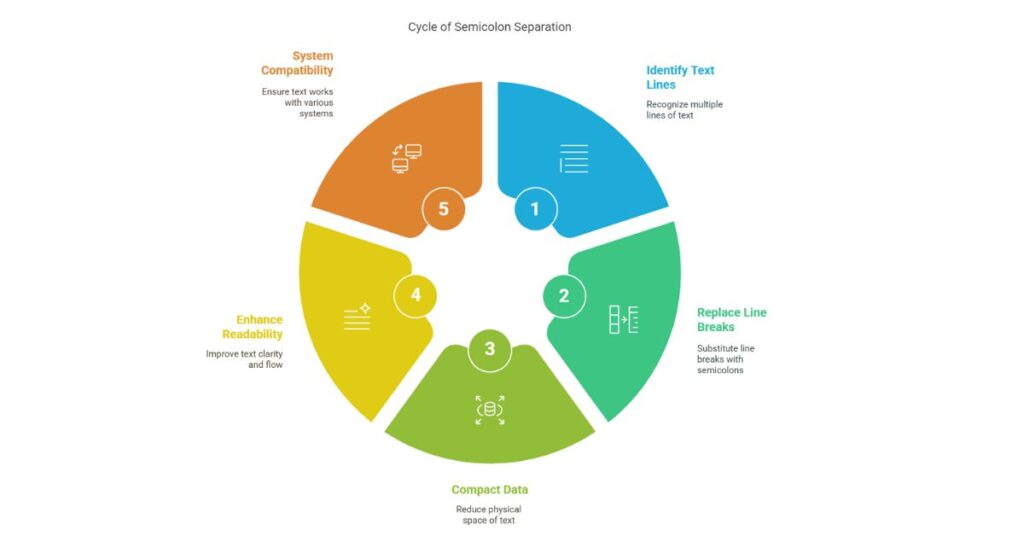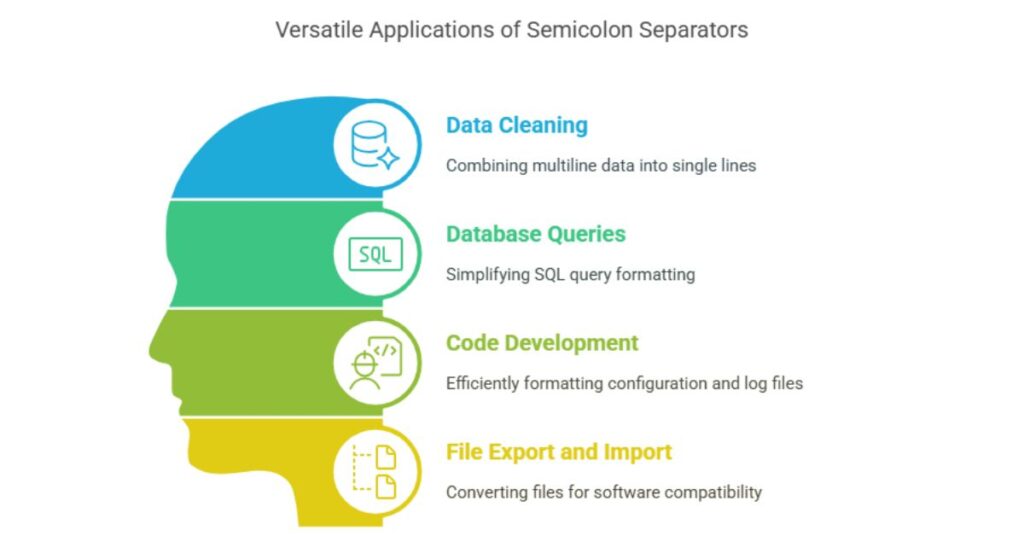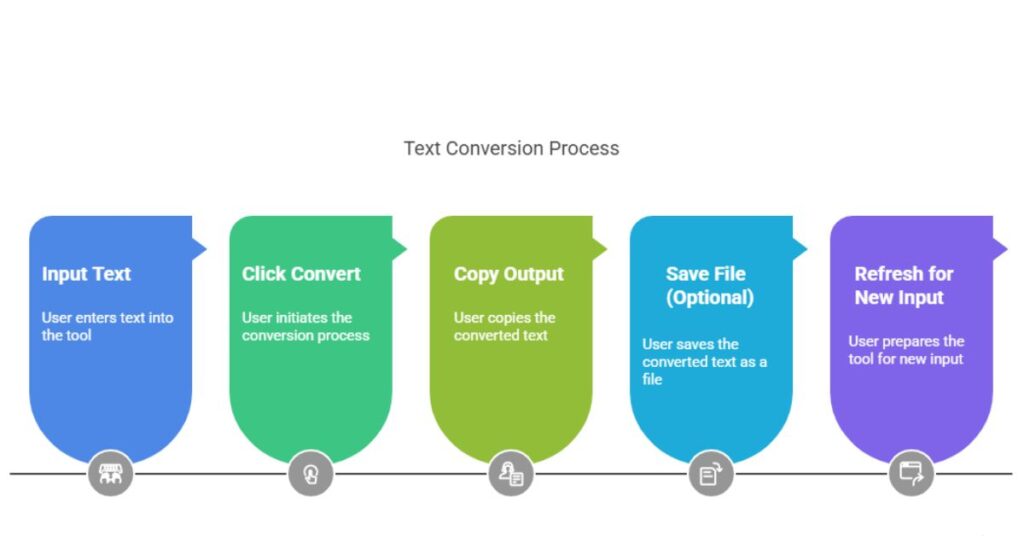Semicolon Separator
Table of Contents
What is a Semicolon Separator?

A semicolon separator is a tool that converts multiple lines of text into a single line by replacing line breaks with semicolons. This is particularly useful when working with formatted data, lists, or text that needs to be compacted for better readability or input into certain systems. The separator ensures the data remains logically connected while reducing its physical space.
Why is a Semicolon Separator Important?
As a Computer Science Engineer (CSE), you often deal with data manipulation, formatting, and presentation. When working on projects such as data parsing, database management, or preparing input for scripts, you might encounter scenarios where line-by-line data needs to be condensed into a single line. A semicolon separator offers a quick and efficient solution for this.For instance, in situations where text files contain values that require processing in tools like Excel, SQL databases, or custom scripts, semicolon-separated values (SV) provide a concise format. This ensures the data is processed correctly without losing its structure.
Real-World Applications

- Data Cleaning:
When working with raw data, it often contains unnecessary line breaks. A semicolon separator allows you to clean the data by combining multiline content into a single-line format. - Database Queries:
SQL queries often require input in a specific format. Instead of manually formatting multiline text, you can use a semicolon separator to simplify the process. - Code Development:
Developers frequently handle configuration files or log files that need reformatting. A semicolon separator allows for efficient formatting, saving time and effort. - File Export and Import:
Exported files, such as CSV or plain text, may need to be converted into a semicolon-separated format for compatibility with certain software.
How Does a Semicolon Separator Work?
A semicolon separator operates by identifying line breaks in the input text and replacing them with semicolons. For example:Input Text:
javascript
Apple
Banana
Cherry
Output Text:Apple; Banana; Cherry
Benefits of Using This TOOL
- Improves Data Organization:
IT helps you organize data in a compact and readable format. - Saves Time:
Automating the conversion process eliminates the need for manual formatting, allowing you to focus on core tasks. - Enhances Compatibility:
Many tools and systems prefer semicolon-separated values for input, making this format widely accepted. - Error Reduction:
Manual formatting increases the risk of errors. Using a semicolon separator ensures clean and accurate output.
Step-by-Step Guide

- Input the Text:
Start by pasting or typing the multiline text into the input area of the tool or script. - Click Convert:
Use the convert button in the tool to process the text. The tool will replace all line breaks with semicolons. - Copy the Output:
Once the conversion is complete, copy the output for use in your desired application. - Save the File (Optional):
Some tools also allow you to save the converted data as a file for future use. - Refresh for New Input:
After completing a conversion, refresh the tool or script to process new input.
How to Build a Semicolon Separator Tool
As a CSE engineer, you can easily build this tool using basic web technologies. Here’s an outline of how to create one:
- HTML for Structure:
Use a<textarea>for input and output fields, and buttons for actions like Convert, Copy, Paste, Save File, and Refresh. - CSS for Styling:
Style the tool with a user-friendly design. Use colors like teal for a professional appearance. - JavaScript for Functionality:
Add JavaScript to handle the conversion logic, clipboard actions, and file saving functionality.
Here’s an example of JavaScript logic for replacing line breaks with semicolons:
javascript
function convertText() {
const inputText = document.getElementById('inputText').value;
const outputText = inputText.replace(/\n+/g, '; ');
document.getElementById('outputText').value = outputText;
}
Challenges and Solutions
- Input Size:
Large input text can slow down processing. To handle this, optimize your script to process the text in chunks. - Special Characters:
Characters like tabs or multiple spaces may need additional handling. Use regular expressions to sanitize input before conversion. - User Errors:
Users may accidentally input empty text or invalid data. Add error checks to ensure the tool functions smoothly.
Conclusion
A semicolon separator is an essential tool for data formatting and organization. It simplifies the process of converting multiline text into a compact, semicolon-separated format, saving time and reducing errors. As a CSE engineer, you can create or use such tools to improve your workflow and enhance data processing tasks. By understanding its importance and applications, you can leverage this tool in various professional scenarios.By integrating semicolon separators into your projects, you ensure data compatibility, streamline processes, and maintain accuracy—all critical features in IT and software development